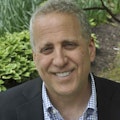Layered learning and intention drive success in fee-for-service dentistry
Key Highlights
- Many dentists struggle with complete dentistry when techniques don’t initially work in practice.
- Layered learning—repeated exposure to advanced courses—builds long-term skill and confidence.
- Setting clear intentions helps dentists commit to excellence and continual professional growth.
- Patient trust grows when dentists perform complete exams and communicate findings with confidence.
- Fee-for-service practice enables the time and focus needed for comprehensive, high-quality care.
I’ve been writing this column about the rewards and benefits of running a fee-for-service (FFS) practice for two years. In response, I’ve received letters that basically say an FFS practice can be a very frustrating endeavor.
One letter in particular caught my attention because it got to the heart of the challenge. The dentist shared how he became inspired by a course on complete dentistry but became disenchanted because it did not work in his hands.
His patients sensed his lack of confidence, and some left his practice. He said, “Due to my struggles, I moved away from that type of dentistry and didn’t return.” He asked if I could “shed some light on how to gain the most from that educational approach to really make an impact.” Here’s my feedback:
Thank you for writing. I can relate to your question because it reflects my learning curve that spanned about 15 years! Dr. L. D. Pankey said it takes 15 years for a dentist to really know what they’re doing. It’s been my experience that most dentists, and people in general, want a quick answer for instant gratification whereas excellence in dentistry is a lifelong pursuit. The answer to your questions all come down to intention.
Let me explain. Also, let me warn you: this may be WAY more information than you asked for so pour a cup of coffee and make yourself comfortable.
The challenge of mastering complete dentistry
I bought our family dentist's practice right out of school, thinking I knew all I needed to know. It took less than a year for things to start falling apart and I realized I needed help. As luck would have it, I went to a Peter Dawson seminar (this was in 1986) and heard about complete dentistry.
But over the three days I became increasingly depressed because he talked about facebows, articulators, and mounted models, and I didn't do any of those things. But I really loved the idea of doing predictable excellent dentistry. I can still remember sitting in my hotel room at lunchtime the last day, very despondent, when a lightbulb went off! What if I bought the articulator system and learned the techniques and committed to becoming proficient? Eureka! I was psyched ...
… at least until I got home and tried to use Blue Delar wax to take a bite registration by attempting bilateral manipulation, and the mounting sucked! I loved the information, but I could not make it work in my hands. So, I took more Dawson courses.
Why layered learning builds lasting clinical confidence
So, here is the first answer to your letter—layered learning. I’m a slow learner, so I need to hear the information many times, each time at a higher level. I try to make it work, see what isn't working, and then return for another course to address those issues.
Six years later I went to Pankey with the same experience. I learned how to take a bite registration using bilateral manipulation, which I was getting a handle on, but I still wasn’t consistently mounting models that would duplicate first point of contact.
I went through the entire Pankey curriculum, and I was 10 years in since that first Dawson seminar. Each course gave me great information, and my understanding of the concepts and how to apply them in the real world got better. But I still was not where I wanted to be.
Then disaster struck. I screwed up a case where I could have gotten sued. It was because I was using some of the concepts, but I wasn’t putting it all together and things fell through the cracks. I could have become frustrated and given up, but I doubled down. That's when I found Frank Spear.
I saw Frank at a Dawson Spear Masters week at Pankey, and suddenly things fell into place. Frank made sense of everything I’d been learning in a way that enabled me to immediately be more effective in mounting models and my bite registrations and techniques. So true to my pattern, I took all of Frank's courses over the next five years and finally found myself practicing the level of dentistry that I had intended as well as the style of practice I had aspired to.
The second important answer to your letter is that this would not have been possible in an insurance-driven practice. As you may know from my previous articles, I’ve always been FFS because it never made sense to me to work harder for the same amount of money.
In previous articles I’ve detailed how to perform a complete exam. I take photos on every new patient. Because I’ve done this for so long, the exam takes me between 15 and 20 minutes. If indicated, I might do study models and bite registration. If there’s anything going on of interest (cracked teeth, lots of wear) I’ll bring the patient back to present my findings, suggest treatment, and discuss next steps.
What you don't hear me say is that I present this in the hygiene room. If I see changes at a hygiene check or see things I’m concerned about, I’ll ask the patient to come back for a complete exam that I probably won’t charge them for. Once I educate them as to the breakdown of their teeth or cosmetic possibilities via a photo series, it’s a much more comfortable conversation. I went through a period of losing patients because I was suggesting treatment to those who didn’t feel they had a problem; in other words, I had to learn how to meet patients where they are.
Fee-for-service success requires intention and patient trust
My bottom line to answer your questions:
Layered learning: You need to hear the same information over and over to retain more over time.
Set an intention: To do complete dentistry, you need to commit and set the intention that you’ll continue to grow and evolve until you get to where you intend.
Get patients on board: Do a complete exam at every new-patient appointment. Their trust comes from your confidence, which comes from continual work on yourself.
Fee-for-service: This is very hard to do in an insurance-driven environment.
Sorry for the very long answer but thank you for the questions. Keep them coming!
Editor's note: This article appeared in the October 2025 print edition of Dental Economics magazine. Dentists in North America are eligible for a complimentary print subscription. Sign up here.
About the Author

Robert S. Minch, DDS
Robert S. Minch, DDS, is a graduate of University of Maryland Dental School and has enjoyed a fee-for-service practice focusing on cosmetic and complete dentistry in Baltimore, Maryland, for 40 years. He is a visiting faculty member at Spear Education and teaches Dental GPR residents at Johns Hopkins Hospital. Additionally, he has created numerous study clubs. He can be reached at [email protected].
